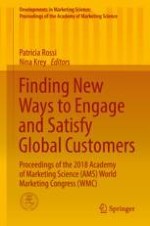This proceedings volume explores the new and innovative ways in which marketers find new global customers and build meaningful bridges to them based on their wants and needs in order to ensure high levels of customer satisfaction. Customer loyalty is ensured through continuous engagement with an ever-changing and demanding customer base. Global forces are bringing cultures into collision, creating new challenges for firms wanting to reach geographically and culturally distant markets, and causing marketing managers to rethink how to build meaningful and stable relationships with evermore demanding customers. In an era of vast new data sources and a need for innovative analytics, the challenge for the marketer is to reach customers in new and powerful ways. Featuring the full proceedings from the 2018 Academy of Marketing Science (AMS) World Marketing Congress (WMC) held in Porto, Portugal, this volume provides current and emerging research from global scholars and practitioners that will help marketers to engage and promote customer satisfaction.
Founded in 1971, the Academy of Marketing Science is an international organization dedicated to promoting timely explorations of phenomena related to the science of marketing in theory, research, and practice. Among its services to members and the community at large, the Academy offers conferences, congresses, and symposia that attract delegates from around the world. Presentations from these events are published in this Proceedings series, which offers a comprehensive archive of volumes reflecting the evolution of the field. Volumes deliver cutting-edge research and insights, complementing the Academy’s flagship journals, the Journal of the Academy of Marketing Science (JAMS) and AMS Review. Volumes are edited by leading scholars and practitioners across a wide range of subject areas in marketing science.
